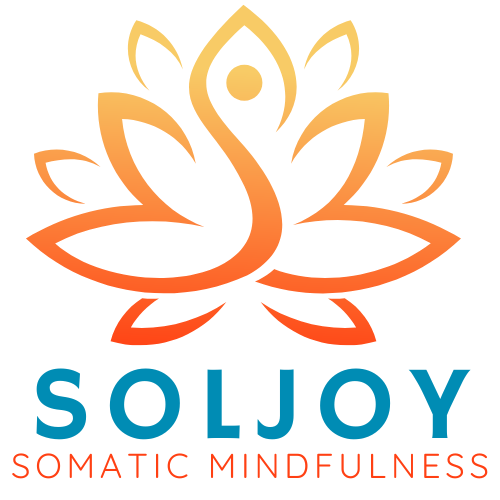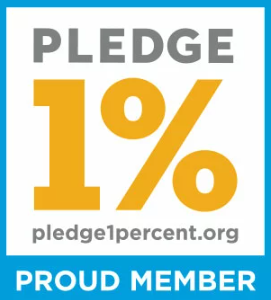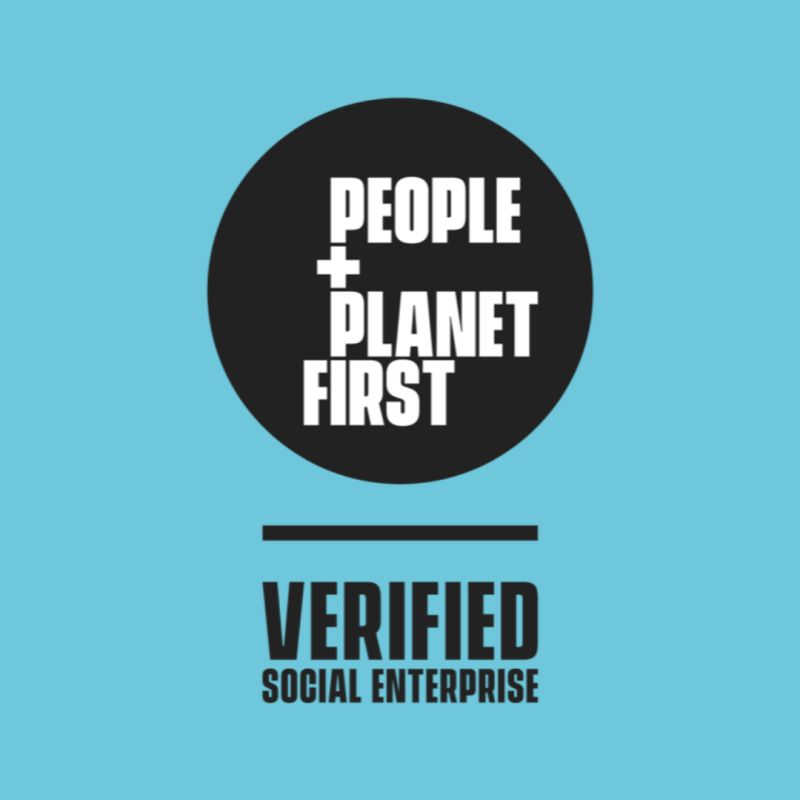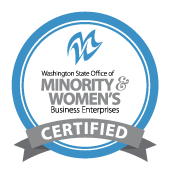3 Secrets to Success: Staying in the Zone
Ever notice how when you’re in the zone, you can accomplish anything? But how do you turn on that “flow” like a button?
Here are 3 Secrets of Success to Stay “In the Zone”
1. Music
Nothing unblocks the brain better than syncing brain waves with music. When I need to focus, I put on baroque music.
Frederic Patenaude writes how Baroque music, such as that composed by Bach, Handel or Telemann, creates an atmosphere of focus that leads your brain into deep concentration in the alpha brain wave state. Learning, memorizing, or reading to this music is highly effective.
On the flip side of cultivating more quiet focused “yin energy”, if you’ve got more yang energy, try dance music. When I’m feeling scattered, I play Eye of the Tiger or something to get me super pumped and clear out that yang energy. I have a dance playlist I bust out if need be!
Scientifically, getting blood and oxygen flowing to your brain better circulates any blocked toxins or energy in your system. It allow your nervous system to flip from a fight or flight sympathetic mode to the “rest and digest” parasympathetic mode where you more easily focus and get stuff done!
Action: Create a dance playlist that will get you pumped up and ready to go! If that occurs as hard, then simply pick a few of your favorite songs. On my google play, I have a radio station for baroque and a playlist for dance music. Now with online stations like Google Play, Pandora, or Spotify–you can create a playlist in seconds.
2. Morning Ritual
As your brain wakes up from sleeping, the first (and last) 30 minutes of your day have a more powerful impact than any other time of the day. Why? Because by default, your brain generally wakes up in the alpha wave state–the optimum state for focus, relaxation, and creativity.
I have tested this concept for years purposefully starting off with what I know I shouldn’t like work email, facebook feeds, and responding to app notifications. Then I compare those days with other days where I start with exercise, reading spiritual or business books, or mindful eating. My ritual varies over the weeks, but typically go through 30 day sprints of different rituals depending on what my body and soul needs.
The result of my testing? I’ve discovered what works best is a minimum of 1 hour of spiritual time with myself first before I eat or work. I’m the only person I’ll ever end up always being with as long as I live, so it’s important to make time for myself first and cultivate my relationship with my soul (or true self, source, higher power, god, universe–whatever name fits best for you!)
Action: Test what works best for you! Track it each day for at least 1 week, but ideally 3-4 weeks to see your patterns. Then notice how whatever morning activity you picked, plays out on your performance and productivity for the rest of the day.
Warning! Watch out for 2 night time temptations that will serious impact your morning ritual. (Remember, your morning ritual really begins at night so be sure to create your bedtime ritual as well.) Those 2 nighttime temptations are:
- Screen time: I have the program Flux installed on all my computers that naturally mimics the sun in my computer screen, taking away blue light (that keeps your brain active instead of slowing down to alpha waves with the fall of nighttime). So if I’m accidentally on my laptop later at night, I’m still able to get sleep without any blue light trying to trick my brain to staying up.
- Eating: It takes 2 hours for your tummy to digest food. I always make sure to eat any last snacks or food at least 2 hours prior to bedtime
If I simply follow good habits for screen time and eating before my bedtime between 9:30 pm – 9:45 pm, I pop up with lots of energy between 5:30 am – 6am. That’s right, no coffee, no alarm clock. Just natural energy like a child.
HOWEVER, if I miss that window by a mere 15 minutes, I’m lucky to bounce out of bed by 6:15am and usually find myself groggy. Especially as you age, creating CONSISTENT rituals and routines becomes more and more critical to having your morning ritual work for you. Not to mention optimizing your health as you age.
3. Moving Meditation
I don’t know about you, but I cannot SIT STILL long enough to meditate. Yes, I’ve attended silent retreats where you sit still meditating for 4 hours at 4am or been in silence for several days, and I can adapt and learn that. However, coming out of a retreat, it’s simply not practical to sit for hours each day in my normal living.
Luckily, I found Body and Brain Yoga–a yoga practice based on the Tao–a 4000 year old philosophy grounded in harmonizing yin and yang energy of oneself with nature.
Basically, I’ve coined the term “moving meditations” as mindful exercises designed to circulate your chi or life energy, as well as your blood and oxygen which naturally clears out toxins, blocks, and pain in your body.
I highly recommend this awesome free app called “1 minute change” that gives you 1 minute exercises you can do each hour to break up the monotony your body faces staring at a screen or sitting. The difference with these exercises versus regular ones is that it’s mindful instead of results focused. So success is not based on what you accomplish but how you feel at the end. Is your brain is in a more alpha state that’s calm, focused, and creative? In other words–are you now “in the zone?”
I’ve given myself various challenges: 10 mindful push-ups, 1000 intestinals (kind of like crunches but focused on activating your gut or core with heat by focusing your mind there), 1 minute exercises per hour for 21 days in a row, etc. Find what works for you.
You can stop “accomplishing” exercises (still ego based) and instead allow each 1 minute exercise to nourish your soul. Instead of treating my body like a machine to take care of that are separate from my mind, these exercises allow you to mindfully integrate your brain with your body as one, resulting in a much more calm and present state.
Now What?
Next time you need to focus in your business, especially when you really don’t feel like it–you really can turn on being “in the zone” like a button. Just experiment with these 3 Secrets to Success to Staying In the Zone: music, morning ritual, or moving meditation. Track your patterns and discover what will work best for you!
Stay tuned for next week when I reveal more on creating your Mojo Checklist–a surefire tool to keep you on track with accomplishing what’s aligned with your greater vision for yourself and the world WHILE boosting your ability to stay in the zone.
Higher levels of performance for anyone?
Anna S. Choi helps conscious businesses and social entrepreneurs attract more clients through her signature program The Client Accelerator for Conscious Entrepreneurs. She takes clients from scattered marketing approaches to an intentional strategic marketing plan. If you’re interested in gaining focus, clarity, accountability in a community of conscious entrepreneurs, please watch this free training video on attracting clients or join her email list.

How to Work-Life Balance When Success Strikes
“To be identified with your mind is to be trapped in time . . . Time isn’t precious at all, because it is an illusion. What you perceive as precious is not time but the one point that is out of time: the Now. That is precious indeed.” –Eckhart Tolle, The Power of Now
When success strikes in your business, it can be easy to find yourself cutting corners on your well-being. Rather than relaxing and celebrating your victories, you might find yourself struggling to keep up with all the momentum.
When launching the Client Accelerator for Conscious Entrepreneurs, the business generated record breaking sales in just 3 weeks. Yet in leading up to the launch, I noticed how quickly I started cutting back on my morning ritual routine, bedtime routine, or mindful exercises throughout the day to make more time to work.
I’m sitting in my energy session with my energy coach, and keep falling asleep. As I grew aware of my body’s sensations, I noticed all the pain arising, the headache that just minutes before I was blissfully unaware of in my own numbness. For a moment, I freaked out. IS it possible to make lots of money AND live a balanced life?!
Thanks to my energy coach, she reminded me what great news it was I could actually feel my body’s pain–the first step to being present. In the past I would have unconsciously ignored my body’s pain, felt numb, and pressed forward to the point where my body would “force” me to stop from sheer exhaustion.
Instead, I am catching it sooner, noticing I need more water, the shoulder pain. I can hear the gentle murmur of my soul’s inner wisdom: I love you. Connect within. Please take care of yourself.
As I continue to discover what work-life balance looks like at different phases of success in the business, it’s critical that we treat work life balance as exactly that. A balancing act. Imagine balancing on a board that’s on a ball. You never expect yourself to ever be at a standstill, perfectly balanced in the middle. Instead, balancing on a ball is a constant moment to moment push, then pull, tensely shaking, then catching yourself from falling. To the observer from afar, it might even look easy. But you know balancing is constant work.
This is no different than in business, balancing work-life balance. So how do you manage work-life balance when success strikes?
Here are a few tips:
1. Close your eyes and sense your inner body. What pain, tingling, soreness, stiffness, tension, or hard spots do you feel? There is great wisdom in your body. You must first be willing to listen to it and not use alcohol, work, entertainment, caffeine or any other thing that distracts you or makes you numb to what your body actually feels for at least 24 hours.
2. Say outloud to your brain exactly where it hurts and in what way. Ie. There is tension in my upper back by my shoulder blade. There is some pain and hardness in my gut. If you can actually feel your tiredness, pain, stiffness or be aware you are numb–this is a HUGE first step to reawakening your body’s natural healing.
3. Do gentle body and brain yoga exercises that will help clear any blockages or lessen the pain. Here are free you tube videos you can use to start to build a relationship connecting your body and brain. As you do the exercises, stay mindful by bringing your awareness into the feelings of your body. Body and Brain yoga Exercises
4. Connect with your body like this 3x day, by repeating steps 1-3 above. You can also you a free app called One Minute Change and do 1 minute exercises through your day to stay connected with yourself.
Bonus: Think of one bold action you can take for yourself to bring more relaxation and focus into your business.
My action was planning a deliberate staycation during 4th of July week with my 7 year old and husband. I got to really unwind, reflect, and connect with myself planning out my next 2 quarters.
How about you?! Please comment below what bold actions you can take for yourself and/or sharing from doing the exercises above!
Anna S. Choi helps conscious businesses and social entrepreneurs attract more clients through her signature program The Client Accelerator for Conscious Entrepreneurs. She takes clients from scattered marketing approaches to an intentional strategic marketing plan. If you’re interested in gaining focus, clarity, accountability in a community of conscious entrepreneurs, please watch this free training video on attracting clients or join her email list.
The Art and Science of Networking: The 6 Faces of Contribution
When you’re operating off a shoestring budget, it’s essential to leverage your impact through your network. Better yet, how do you transform your network into a tribe of strategic alliances?
If you take the case that people generally love contributing—the question becomes understanding in what way? You will then find an abundant resource of generosity that is a win-win solution with no money required.
To clarify, I’m defining network as a loosely affiliated group of one on one associations, while a tribe member is someone you could call up at 3am in the morning and they will ask “how can I help you?”
At the height of my networking, I would attend two networking events a week averaging five one-on-one “coffee meetings” per week. These conversations gave me insight into what motivates people to contribute. Over many years of networking, I noticed a pattern of how different relationships like to express giving back or contributing. And I created the 6 Faces of Contribution based on those patterns. And just like a love language, I learned how to speak in terms of my network’s “Contribution Language” activating them into lifelong tribe members who were eagerly ready to contribute to the success of my business.
Here are the six faces of contribution unveiled: Investor, Connector, Masterminder, Builder, Supporter, and Champion.
The 6 Faces of Contribution:
Investor: Investors use money as their medium to support you. Either as direct clients, or funding you—money is how they engage with you. Not all investors want to do more than just pay you. When I was the Director of Development for an impact investing wealth management firm, I quickly discovered how clients did not necessarily want to make introductions to other people—no matter how happy they were with their service. It’s counterintuitive to the noise you hear out there that if people are happy, they’ll naturally share with others. Not necessarily. On the other hand, there were several instances of people wanting to refer you without having ever been a customer or client! What a paradox. Or is it? Haven’t you noticed some people simply enjoy connecting people for the sheer joy of it? Which brings me to the next Face of Contribution
Connector: They are sometimes referred to as an influencer, center of influence, or someone “well-connected.” These people are rarer to come by and are the hub of influence in their community. If you authentically build relationships with these people, they become an invaluable resource for years to come, once you can “activate” them and give them an opportunity to engage—more on activation later. Connectors don’t need referral fees. Unlike Investors who use cash as their medium of contribution, Connectors use reputation as their medium. When a good match is made, boom—up goes their reputation for having made that connection and the more valuable they become in being known for making a quality referral. Connectors are your best sources for referrals—NOT Investors. They may never even buy from you, and they love to matchmake. Caution: There are a lot of posers out there who claim to be a connectors, but don’t take the time to really understand your business to be able to give a good referral or match make in other ways. They either say they’ll keep a look out and don’t deliver or if they do, it’s just not the right person to talk to or unclear on why you were connected in the first place.
Masterminder: These people LOVE sharing ideas and are strategizers. They make the best sounding boards and likely love research. One of my colleagues was the quintessential Masterminder. She loved to vet my ideas, build on them, play with them and when it was time to check out our new project idea, she’d happily research, compile, synthesize and report back her findings, often bound with a plastic cover . . . free. That’s right, people’s contribution language is a boundless, limitless resource free of obligation, indebtedness, or duty. Might I even go as far as to say—their joy. You can’t put a price on that, especially when doing mission driven work—and your company’s purpose is what drives them to offer very professional services for free.
Builder: Builders are your worker bees. They don’t want to strategize, they don’t want to make introductions, or pay you, their medium of contribution is time. They will do stuff for you . . . happily. That’s how they best feel fulfilled. They are folks who simply help you get-it-done. Nuf said.
Supporter: Supporters are typically your network of personal relationships that have nothing to do with business. They simply are your friend and love you. Their contribution medium is caring. Think spouse, mom, or best friend. However, they are in your network. They often know nothing about business but give you a reality check and tell you straight how it is, out of concern or worry for your overall well-being. Supporters do not make the best people to consult with or get advice from business-wise. But they are great at getting a totally outside perspective and alignment check in forwarding your purpose.
Champion: Champions are your professional fans and followers. No matter where you go in your journey, how many pivots you make in business, how many life changes impact your expected path and take a turn, they stick with you and love your work. They may not directly engage with you but are like the professional version of your supporters who are in business and whom you can go to for support. Think cross-sector colleagues who are your kindred spirits you meet at a business conference or event. Again, may never buy from you, or be in a position to offer strategy or advice—they simply cheer you on. They lift you up when you’re down and believe in you.
To activate your network into a tribe, you must understand what face of contribution they most like to play. Meaning, what is their primary expression of contribution or contribution language? Then have conversations creating opportunities for them to express their contribution to participate in what you are up to creating.
Like any categorization, most of your network is going to have multiple faces of contribution with one or two as a primary language. Your job is to discover their primary language and create win-win propositions from there.
Analyzing your Social Capital
Brainstorm a list of all your top 30 relationships into a spreadsheet. Don’t worry about screening people in or out. Just jot down people who support you, believe in you, cheer you on, buy from you, or listen to you. Try to come up with at least 15. Then label 6 columns across with each face of contribution, and rate each person 1-3 (1=not a fit 3=yes, this is how they love to contribute!)
Then add up the total points for each person listed. Find out who has the highest point value. Notice what you discover to determine next actions to take for each relationship. What value can you offer each relationship? What requests can you make of each relationship?
Pitfalls to Watch Out For When Making Requests of Your Tribe
1. Pride. What I’m talking about is when someone genuinely offers you (no strings attached) in an area you KNOW and WANT help with, and you refuse for some reasons (fear of looking needy, or a mooch, or not wanting to be in debt and owe them). Receiving true generosity is a gift takes a tremendous level of courage that honors others.
Solution: Get good at graciously saying thank-you. And accepting offers of help. Think of a time when you genuinely wanted to help someone move, or make a meal, or offer service—and they refused. What did you feel? Did you feel compelled to make an offer again? Now think of a time when you were the one who refused the offer. Were you aware of how it made the other person feel when you refused?
2. EXPECTING others to give to you and having resentment or disappointment if they don’t. When you make a request, you get what you get. If it’s a no, honor the no, and find out how they would like to engage or contribute to the business.
Case Study
When I started up TEDxBellevue, I knew a team was critical to success. In order to be profitable while fulfilling the mission of the event theme Sustainable Happiness, first things first—I had to activate my network into a tribe.
How? I analyzed my top relationships by their primary contribution language that reached out to each relationship. I created win-win propositions by understanding how they best like to contribute.
The end result? I recruited an entire team of professionals from cross sectors in tech industry, non profit, and entrepreneurs to lead 8 different aspects of the event. This resulted in selling out 2 weeks before the event, at $100/person tickets. Through the help of my tribe, a $10K event to put on, cost us $2K, and the event profited $2500.
Post event, I wondered if it was only successful because the TEDx brand. To test this assumption, I launched another event the Creativity Symposium from scratch with the same ticket pricing and audience size, again, with no money, and this time–no brand awareness. Different cause. Created a tribe to rally around the cause of women’s leadership.
This time we doubled in net profitability over TEDx. How? Two factors:
1) Rallying around a purpose (in this case women’s leadership)
2) Activating my network into a tribe by understanding their contribution language
By analyzing your network of relationships or “social capital”, you can learn to leverage your connections more wisely into a tribe that will eagerly help you grow your business.
Being contributed to takes tremendous courage, vulnerability, strength, and is a huge source of power. Master both sides of contribution and the world will be your oyster to create greater impact!
Anna S. Choi helps conscious companies grow their client flow through business and marketing coaching. She loves synthesizing, adapting, and distilling strategic marketing plans into executable daily actions to take that get results to grow your business. If you’re interested in taking focused action on an intentional strategic marketing plan to energize more client flow, please watch this introductory video to see whether we are a fit. I look forward to connecting and supporting you! You can contact her at anna@annasunchoi.com or 206-330-6426.
Why Now Is the Time to Start a Social Enterprise or Conscious Business
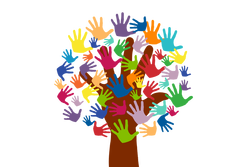
Social enterprises are companies with heart. They’re the businesses that don’t just work to make a profit but focus on creating value for society, and the world as a whole. These are the companies that think more carefully about the solutions they need to bring to the marketplace, with innovative strategies to support people, the environment, and more.
From coffee bean companies that source ethical work, to green businesses who build environmentally-friendly offices, social enterprises often face many complex challenges. After all, you’ll need to find a way to stick to your values no matter what, while keeping costs as low as possible. Of course, as the demand for socially-conscious organizations grows higher, businesses as a whole are beginning to implement more programs that allow them to give back to their community, donate to people in need, and more.
So, what’s fueling the move towards a more conscious business environment? The simple answer is that the time is ripe for companies to start showing their social side. Let’s look at some of the reasons why now is a great time to launch your social business.
1. Greater Governance Flexibility
In the past, it was difficult to run a company focused heavily on giving, as the stipulations for launching a business placed significant importance on delivering value for stakeholders. Now, there are new regulations in place that support the concept of a “triple bottom line”. In simple terms, benefit corporations agree to generate profits for themselves and their shareholders, but they also assist with solving social and environmental problems.
A greater degree of flexibility is crucial to running a successful social enterprise because it means that today’s entrepreneurs have the freedom to do what’s right for the world, as well as what’s right for their companies. In an environment where the profits of the stakeholders come first, it’s difficult to maintain a good balance between serving the environment and serving the company. Today’s conscious enterprises are finally free to officially stand for what they believe in.
2. The Rise of a Socially-Conscious Workforce
Any company – whether it’s socially conscious or not, knows that it needs amazing people to drive success. The right people, from your those responsible for sales, to those who help you market your organization, can quickly help your business rise through the ranks. Today, many teams are packed full of Millennials, with Generation Z just around the corner.
While many people talk about the digital-savvy nature of the younger generations, they often forget to mention the point that’s so important for socially-conscious companies. Millennials prefer to support companies that give something back. Not only are they more likely to buy products and services from socially conscious organizations, but these younger generations will also actively seek out careers with employers who share their values.
There are few things in business more important than loyal and dedicated employees. Now that Millennials have social good so high on their list when it comes to employment and purchasing, it’s safe to say that socially-conscious businesses will have a wider pool of talent to choose from. Not only can your social nature help to attract skilled individuals, but it can also keep them around for longer too.
Remember, your employees want to feel as though they’re making a difference and contributing to something greater than themselves. Putting social consciousness at the heart of your business gives you a deeper sense of purpose and belonging at work.
3. Appeal to More Investors
Not only will your socially conscious nature help to attract employees and keep them happy, but it could also appeal to your investors too. As consumers continue to hone their focus on social consciousness, investors know that the businesses with purpose are the ones most likely to deliver the best results. As such, they’re willing to support the growth of socially-conscious companies.
Businesses who find a way to give something back to their community show investors that they stand for something more important than just making money. As millennials become the more monied generation in the world today, they’ll be looking for companies that they can get behind on an ethical basis, as well as organizations that deliver a regular profit.
From an investment standpoint, socially-conscious companies aren’t just effective because it feels good to give something back – they’re a powerful way to boost profits. As studies continue to show that consumers are willing to spend more money with those who donate to a charitable cause, companies with a focus on the world around them could potentially make more money and stay in business for a lot longer than their counterparts.
4. Differentiate Yourself from the Competition
The business landscape has changed dramatically in recent years. The rise of new technology has meant that there are now more ways than ever before to get involved in launching your own company. Of course, while that’s a great thing for the savvy entrepreneur who wants to explore a life in business, it also means that there’s a serious amount of competition in the marketplace.
In a world where it’s difficult to set yourself apart from companies who claim to do what you do, but bigger and better, socially conscious values can be a powerful way to drive differentiation. A commitment to the environment or social good shows your customers, investors, and shareholders that there’s something unique about you that should maintain their interest.
Consider the Toms shoe brand for instance. The company generates a huge amount of interest from day one because it donates a pair of shoes to children in need whenever a pair of shoes are purchased by a customer. While there are plenty of footwear brands out there, few go that extra step to support the world around them, which is why Toms stands out.
5. Healthier Entrepreneurship
Finally, as tempting as the thought of running your own company, choosing your own hours, and selling products you care about can be, it’s important to remember that entrepreneurship isn’t always a walk in the park. For most business owners, it means long hours and a lot of stress. Running a company is hectic, with ups and downs that may leave you worrying about whether you can afford to pay the bills – never mind change the world.
From consuming extra unhealthy junk food to skipping your workouts and getting less sleep, there are a lot of bad habits that can form when you’re running a company. The good news is that running a socially-conscious brand could actually have a positive impact on your health. A study published in the Journal of Science and Medicine found that there’s a higher rate of health and happiness among volunteers.
In simple terms, we feel better when we’re doing something good for the world. Generosity has a positive impact on your emotional health, which can also change your physical health too. After all, it’s much easier to sleep comfortably at night when you know you’re doing your part to make the world a better place.
Today, the rise of social consciousness has ensured that every company has the chance to do something important in their industry. It proves that you can make a profit, while also making a difference. If you’ve been considering creating a company with purpose, now might be the perfect time to explore the avenues of socially conscious entrepreneurship.
Author: Raj Jana is the entrepreneur and socially-conscious mind behind JavaPresse, a coffee company dedicated to delivering exceptional flavor, without compromising on ethics. Raj believes in the importance of businesses with purpose, and when he’s not running his organization, he’s happy to share tips and advice with budding business owners.

What is Your Brand Experience?
When you walk into a room, what is your brand experience? Your energy creates a message whether your mouth is open or not. Consider that how people experience you markets you more than words or even your actions. When you energetically align who you are with what you offer, your impact magnifies–attracting clients to you for reasons they may not even be able to put into words.
Here’s an example. I was 22. Just graduated from the University of Washington, I had no clue what job to get. I was a broke, art major with no connections, experience or money, and went to a career fair and lined up 10 interviews. At each interview, I resonated with their energy or not and kep asking myself “Do I want to become like this person interviewing me in 5-10 years?”
I ended up going with a small financial planning company promising great training and support with unlimited growth potential. But it wasn’t just the benefits that sold me. The final gut check whether to accept a position was resonating with the interviewer’s energetic presence. In this case, it was Eric who showed up as super down to earth, authentic, straight, and quite simply, I trusted him. He became my business manager and trainer, who supported, coached, and trained me to gross six figures by age 23.
My mentor’s presence or brand experience resonated the loudest.
You might be wondering now, what is my brand experience?
Rather than guess, you can just find out by asking. Even strangers! You might be waiting in line at a store. And you can ask the checkout person, “Hi! I’ve discovering what kind of impression I leave on people. Would you mind if asked you for some quick feedback? In 1-3 words, what’s your first impression of me?” You could ask a neighbor walking by, or you kid’s childcare drop off person.
I’m always shocked by what strangers intuitively get about you without ever talking! It helps me gauge in reality who I’m being in the world at a particular point in life.
If you’re shy to ask strangers, just do it and practice facing your fear. Or you can ask people you know, love, and respect. Simply email them “Hey there! I’m doing an experiment. Quick question: When I walk into a room, what are the first 3 words that come to mind?” Again, having tested this experiment numerous times–many times with the same friends over the years–those three words evolve as you grow and point to your brand experience. [NOTE: Every now and then, there might be a hiccup in your relationship to address first before getting feedback (clean up any unfinished business!) but 99% of the time, my heart is warmed by their responses.]
Then compile their responses, and see if any patterns emerge. Ask yourself, is how you’re showing up lining up with your business’s core values and mission? If it does overall, awesome! You are energetically aligned in your business. If not, see what value is missing that you are not embodying. Or perhaps it’s the other way around–you are embodying a value so vibrantly and it’s not incorporated into your business.
That’s what I discovered. Most of my friends and strangers have said the words that come to mind are “energy” or “enthusiasm.” At the time, my business did not have that value anywhere. I was wasting a huge, natural character trait I could integrate with my business. I did. I created the ENERGY core signature coaching program and started to embed elements of energy everywhere–in my logo, marketing materials, trainings, and even in making decisions for which marketing strategies to best implement. Speaking was where my energy could most resonate and impact with others making follow-up calls super easy to convert into clients.
When you energetically align your business–your presence magnifies. Your brand experience clicks for those you come into contact with, and frankly, sets off the Law of Vibration or Law of Attraction for whom you want to do business with. In short, you naturally attract the right clients.
Your turn:
What is your brand experience?
Does your brand experience align with your vision, mission, and values?
What’s your vision beyond making more money?
Remember, the stronger you are aligned from the inside out, the more others can experience your business presence and resonate with your message to attract your tribe of clients.
Anna S. Choi helps mission-driven, conscious entrepreneurs attract more clients through business coaching and training. She loves synthesizing, distilling, & customizing strategic marketing plans into executable daily actions to grow your business. If you want more focus, accountability, and peace of mind day to day while implementing an intentional strategic marketing system to attract more clients, learn more at www.annasunchoi.com.
Why Should You Invest in a Business Coach?
You don’t. That’s right, I’m a business coach saying you don’t need to invest in a coach. Here’s the deal: It is only when an entrepreneur is hungry for growth and transforming where they are now that a business coach even makes sense. What matters most is your mindset.
Any Olympic athlete knows a coach is required for high level performance and winning the gold. You would never see an Olympiad reading an article on whether to have a coach. Being up to a big game to win the gold, she already knows a coach is required for her performance. It’s her mindset of winning the gold that determines her actions of what coach is best for her.
On the other hand, a recreational soccer league player would question having a coach. In fact, you likely don’t need one! A coach isn’t necessary. You only need a coach to the degree you are playing a bigger game. No big game, no coach needed.
Now, if you’re reading this, I know you’re a performer who IS up to a bigger game. You have a growth-oriented mindset and is interested in expanding on your current successes to manifest a bigger vision. Or perhaps you are someone who’s accomplished a lot and are now looking at how to uplevel your performance, switch careers, or scale your company.
Whatever stage you’re business is at, here’s the litmus test whether you know you’re ready for a coach. Entrepreneurs invest in coaching for primarily 3 reasons:
- You cannot grow your business on your own. And you have the courage to admit it.
- You want to grow your business faster. This is often due to urgent circumstances to cause a particular result in a short time frame.
- You want to be as efficient as possible and follow a proven methodology versus reinvent the wheel.
If you can answer yes to at least one of those questions, I’d recommend interviewing business coaches. When hiring a business coach, here is a mental checklist you might use: Do you share a similar philosophy? Do you enjoy each other’s presence? Does the coach have credible success stories of their clients? And the most important question of all: Am I up to a bigger game? In other words, what’s your mindset?
The answer to that question won’t be inside your head. Stop consulting with yourself–it can be a bad neighborhood of overused past based neuronal patterns designed to help you survive. Instead, interview some loved ones and discover how you’re showing up. Then choose.
As many entrepreneurs discover, business is not for the faint of heart. If you want to catalyze your dream lifestyle and the difference you want to make in the world, a coach simply helps you do what you could not on your own, helps you utilize proven methodologies and systems, and ultimately, helps you achieve your dreams faster.
Anna S. Choi helps conscious companies grow their client flow through business and marketing coaching. She loves synthesizing, adapting, and distilling strategic marketing plans into executable daily actions to take that get results to grow your business. If you’re interested in taking focused action on an intentional strategic marketing plan to energize more client flow, please watch this introductory video to see whether we are a fit. I look forward to connecting and supporting you! You can contact here.
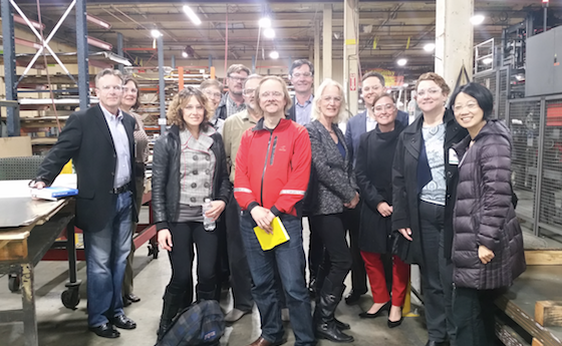
Game Changer: $80 Million Dollar Social Enterprise, Pioneer Human Resources and Industries
Game Changer: $80 Million Dollar Social Enterprise, Pioneer Human Resources and Industries
On March 29, 2017, Social Enterprise Alliance of Washington State kicked off its first annual event for the year featuring Pioneer, an $80 million social enterprise serving people released from prison or jail in Washington State, and those in recovery from addiction
who are in need of treatment, housing and job skills training. Pioneer helps people rebuild their lives after jail or prison with counseling and treatment services, and supports the transition from prison with training and job opportunities.
Pioneer is game changing the statistic that 68% of those released from incarceration return back behind bars. Rather than giving “hand outs,” Pioneer believes in “hand-ups”, by first ensuring basics needs like housing are met. Then they begin focusing on providing job skill development, training, employment, and certifications and the ability to successfully start a new life on a healthy path and often hire people with criminal backgrounds for it’s manufacturing arm Pioneer Industries.
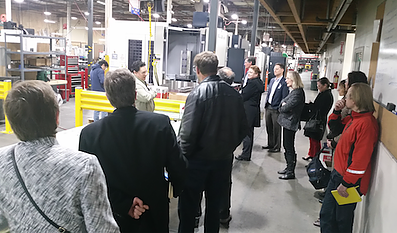
Pioneer Industries fabricates sheet metal and manufactures machine parts for companies like Genie, which sell construction equipment. Pioneer Industry’s most recent investment includes purchasing a $750,000 state-of- the-art machine that manufactures parts for Boeing airplanes.
Pioneer hires employees based on merit and best fit and don’t discriminate based on past criminal history. This unbiased hiring process not only allows a way for those getting out of prison to be considered for employment, but allows for “the cream of the crop” to rise up. On the tour, Pioneer Industry’s hiring manager shared how people out of jail or prison tend to make the best employees. They are the most hungry to improve and make the most out of their job to make a better life. In fact, 65% of Pioneer employees are formerly incarcerated. On the manufacturing floor, there’s no way to know whether someone was incarcerated or not in the workplace culture—everyone is treated equally and up to the employee to disclose.
Because of the plant’s collective commitment to quality control, and taking pride in their work, they are consistent in meeting high expectations for production and delivery of quality products. As a result, they have built a strong reputation and respected business!
Revenue generated from Pioneer Industries successfully funds, grows, and sustains Pioneer as a social enterprise. They’ve only begun to look at traditional non-profit financing in the form of grants or stewarding large donors. Pioneer is an organization worth modeling, successfully integrating both mission and market driven approaches. Social Enterprise Alliance Washington State is proud to introduce you to a social enterprise model that works well. Imagine if all organizations were both mission and market driven?
Anna S. Choi helps conscious companies grow their client flow through business and marketing coaching. She loves synthesizing, adapting, and distilling strategic marketing plans into executable daily actions to take that get results to grow your business. If you’re interested in taking focused action on an intentional strategic marketing plan to energize more client flow, please watch this introductory video to see whether we are a fit. I look forward to connecting and supporting you! You can contact here.
The Renaissance Soul: The Myth of having One True Calling
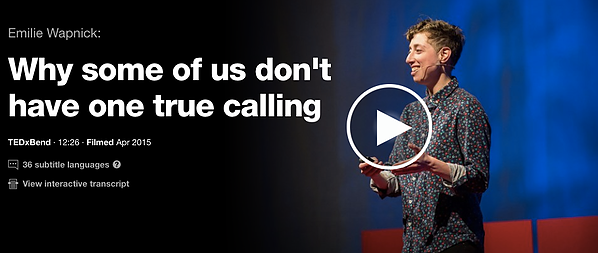
In her talk she highlights how we need to nurture multipotentialites who offer three superpowers:
- Idea Synthesis
- Rapid Learning
- Adaptability
She closes her TEDxBend Talk underlining how “Idea synthesis, rapid learning and adaptability: three skills that multipotentialites are very adept at, and three skills that they might lose if pressured to narrow their focus.
As a society, we have a vested interest in encouraging multipotentialites to be themselves. We have a lot of complex, multidimensional problems in the world right now, and we need creative, out-of-the-box thinkers to tackle them.
. . . let’s say that you are, in your heart, a specialist. You came out of the womb knowing you wanted to be a pediatric neurosurgeon. Don’t worry — there’s nothing wrong with you, either
. . . In fact, some of the best teams are comprised of a specialist and multipotentialite paired together. The specialist can dive in deep and implement ideas, while the multipotentialite brings a breadth of knowledge to the project. It’s a beautiful partnership. But we should all be designing lives and careers that are aligned with how we’re wired. And sadly, multipotentialites are largely being encouraged simply to be more like their specialist peers.
. . . embrace your inner wiring, whatever that may be. If you’re a specialist at heart, then by all means, specialize. That is where you’ll do your best work. But to the multipotentialites . . . to you I say:
embrace your many passions. Follow your curiosity down those rabbit holes. Explore your intersections. Embracing our inner wiring leads to a happier, more authentic life. And perhaps more importantly — multipotentialites, the world needs us.”
The Renaissance Soul
Margaret Lobenstine, author of The Renaissance Soul characterizes Renaissance Souls as folks who:
- Prefer variety over single minded focus
- Have a working style emphasizing growth and evolution instead of rigid adherance to a plan
- Define success by challenges mastered instead of how far up the ladder they’ve climbed
They are NOT people who are geniuses, job-hoppers, use business as an avoidance mechanism, are superior to others, have ADD, or are jack of trades master of none.
In fact, consider this role model Renaissance Soul who clearly demonstrates jack of all trades, master of all!
-Served as a journalist in Ghana & Egypt
-Composing songs for popular singers like Harry Belafonte
-Lecturing to packed auditoriums and appeared on innumerable talk shows
-Acting, both on camera and on stage
-Received nominations for both the National Book Award and Pulitzer Prize
-Working with Dr. Marting Luther King, Jr. For civil rights
-Singing jazz
-Holding a professorship in American Studies
-Dancing it the opera Porgy and Bess
-Speaking eight languages
-Serving as America’s poet laureate
Who is this? The one and only Maya Angelou, my new hero. I had no idea the degree to which this woman mastered innumerable accomplishments across a wide variety of disciplines.
Case Study: Myself
When I was 18, I remember sitting in my Nissan facing the Columbia River. I said aloud to myself, “Is this it?!” I thought I had it all: ASB Vice President, Scholar Athlete, competing classical violinist winning several gold and silver medals, awarded numerous college scholarships, lead actress in a musical, voted by peers as most loving leader, had a hot boyfriend from the big city, and yet felt totally unfulfilled. In fact miserable.
I became consumed with the question “What’s my purpose?” forcing myself to choose one pathway–convinced if I just mastered other areas, perhaps one area would resonate above all areas, then I would find my calling and be fulfilled.
So at 19, I interviewed ten human beings I looked up to and discovered eight of them had majors completely separate from their career! I concluded (in this field research) that I would major in whatever fulfilled joy in my heart.
I majored in art. Interdisciplinary (of course!) art. I dove in deep, spending hours and hours drawing, building wire framed pants, creating yarn spiderwebs at dawn. I studied abroad in Rome Italy, turning fish cartons into a palate for a painting. I got commissioned as an artist, had my work featured in a museum and local magazine, and was even told by my art professor (who are famous artists!) an affirmative “you can make it” as an artist. Despite all this, I found myself picking up a second major in Community, Environment, and Planning and founding a student organization InsideOut Leadership.
What was wrong with me? Why couldn’t I commit?
Consider human beings live in a culture that calls for and even romanticizes the “one calling” versus multiple callings that often can have Renaissance Souls forcing themselves into a box by focusing on one specialty, feeling trapped to pursue for the rest of their life! No, you don’t have commitment issues. As typical of a Renaissance Soul, I had mastered the challenge and once I knew the game could be won, went on to the next challenge, rather than expand and grow it bigger. I had no qualms about becoming a Financial Advisor as an art major…who soon sold her business after five years to be a stay at home mom. The go on sabbatical, publish a children’s book, and yes, start a business in event production.
Pivoting, rather than growth and expansion, are far more delectable for the Renaissance Soul. Find out if you are a Renaissance Soul here. While I fear my community may be confused on the changes to different fields, the idea synthesis trait allows me to find a common thread in my mission, as well as find peace in pursuing mastery of many passions.
From one Renaissance Soul to another, here are two frameworks I’ve discovered that create peace of mind:
1. Draft a mission statement that embodies your top 3-5 core values. This mission becomes the umbrella theme over all your passions. My mission is to empower the next generation of leaders. This common thread can be found in my art, financial planning, gender equity activism, event production, and dancing. Your mission creates a personal brand that allows others to comprehend, remember, and connect for themselves how what you offer contributes to their communities.
2. Live life in 3-5 year increments. As the author of your life, make every 5 years (or whatever time frame works for you between 1-10 years) be a new chapter encompassing your new passion! Ie. I focused on art for 4 years, financial planning for 5 years, motherhood and children’s education for 3 years, etc. Instead of waiting for retirement to have permission to create a new chapter, author many chapters in your life!
Thank you Margaret Lobenstine (who has since deceased in 2015) and Emilie Wapnick for your work in creating a home for us jack of all trades, masters of all! This Renaissance Soul can find peace of mind surrendering to her true nature. Home at last!
Anna S. Choi helps conscious companies grow their client flow through business and marketing coaching. She loves synthesizing, adapting, and distilling strategic marketing plans into executable daily actions to take that get results to grow your business. If you’re interested in taking focused action on an intentional strategic marketing plan to energize more client flow, please watch this introductory video to see whether we are a fit. I look forward to connecting and supporting you! You can contact her at anna@annasunchoi.com or 206-330-6426.
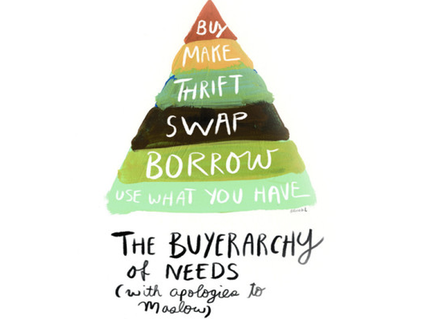
Buyerarchy of Needs
As we head into the holiday season, I’m looking for an alternative for both buying and receiving gifts. My family started a new tradition of picking a cause that the other family member donates to. While that tradition only lasted a couple of years, I found myself wanting
I first got educated out of stuff coming across Annie Leonard’s 2007 Story of Stuff video.
It’s education that you don’t really want to know, and yet deep down inside–you do believe it’s your responsibility to at least get educated. So I watched the video, learning the entire supply chain of “stuff” from electronics and smartphones to plastic toys. By the end, I was now questioning everything I owned and thus began my conscious consumerism.
Learning where stuff actually ends up can feel daunting. So rather than overwhelm you into inaction, here are a few ideas to inspire you as a conscious consumer:
1. Start a new holiday tradition with creative gifting either by donating to a cause, making jams or soaps, or gifting an experience like cooking classes.
2. Check out New Dream.org‘s Simply the Holidays link where you can get ideas for fun holiday tradition gift alternatives. I love their take-home message:
“Part of being a conscious consumer is educating ourselves about the hidden costs behind the things we buy. But we also need to consider what’s driving us to buy these things in the first place: will they really enhance our lives and make us happy, or are we buying them simply because we “think” we need them or because advertisers tell us to?”
3. Finally, you practice living by Sarah Lazarovic’s “Buyerarchy of Needs” who did a one year social experiment where instead of buying whatever she wanted, she painted what she wanted to buy for a year. She came up with this cool Buyerarchy of Needs.
Whoops! The Power of Owning Mistakes
Leveraging Mistakes into Opportunities to Build Trust
Beep! I look down at my text which says “Anna, I’m trying to buy tickets to the Creativity Symposium and the website says they are no longer available.”
Huh? This is ironic. Our team has done tons of marketing, pushing the final days of our early bird tickets only to find that people trying to buy a ticket–cannot. I found the mistake: I accidentally programmed the wrong expiration time for 12/31 at 12:30am instead of 1/1 at 12:30am. I had lost a day of sales on the biggest day for selling tickets because I didn’t double check the expiration time on the ticket site.
Now is the moment of truth. I could fix it, text my friend it’s fixed, then simply pretend like it never happened to the public. Why acknowledge a mistake? It only affects a few. Plus it looks bad, right?
You’ve heard it before: “Put your best face forward,” “Fake it til you make it,” or “Look as good as possible, leave no room for obvious error.” As my former boss at a wealth management company said it, “I hate to say it, but yeah–we have to be perfect.” Phew! Talk about pressure.
At Start Up Seattle, Shauna Causey, a former Executive at Comcast, shared how she risked her job by tweeting a mistake the company had made that resulted in customers not having internet access for several hours. Rather than cover it up with PR, she simply said what happened and apologized publicly, against the company policy. From her bold ability to embrace the mistake publicly, Comcast sales actually skyrocketed following the incident, customers appreciated the integrity. She kept her job, and even got recognized for it, eventually being promoted.
In this new year, what if mistakes were awesome? What if mistakes were treated as opportunities to build trust rather than something to cover up? Clearly, nobody’s perfect. We are just human.
There’s a wonderful little book called “Beautiful Oops” where all the pages intentionally are torn, they have holes; in essence, it’s as if a toddler had gone through the book. I bought it for my son Eli in hopes of teaching him the beauty of mistakes and failure. Then holding my tongue as he tears up the pages you’re not supposed to tear. 😀
Imagine you’ve made a mistake. Now is the moment of truth. What if you boldly owned it 100%? In fact, you leveraged it as an opportunity to build trust. Heck, you could even get creative with how to turn that mistake into something bigger and better for everyone in the long run.
What would it look like if T-Mobile’s John Legere or Microsoft CEO Satya Nadella fully owned their mistake? That they really went all the way in how their comments didn’t work. Might that be a huge opportunity to build trust with not just their shareholders but the broader community and women in society?
Starting the Year Right
My volleyball coach Jennifer Tonkin said it best, “To gain confidence you must aggressively fail.”
What will you create with your mistakes next year?
What mistakes have you embraced from this year and last?
Be proud of your next mistake. There just might be some confidence waiting for you on the other side.
